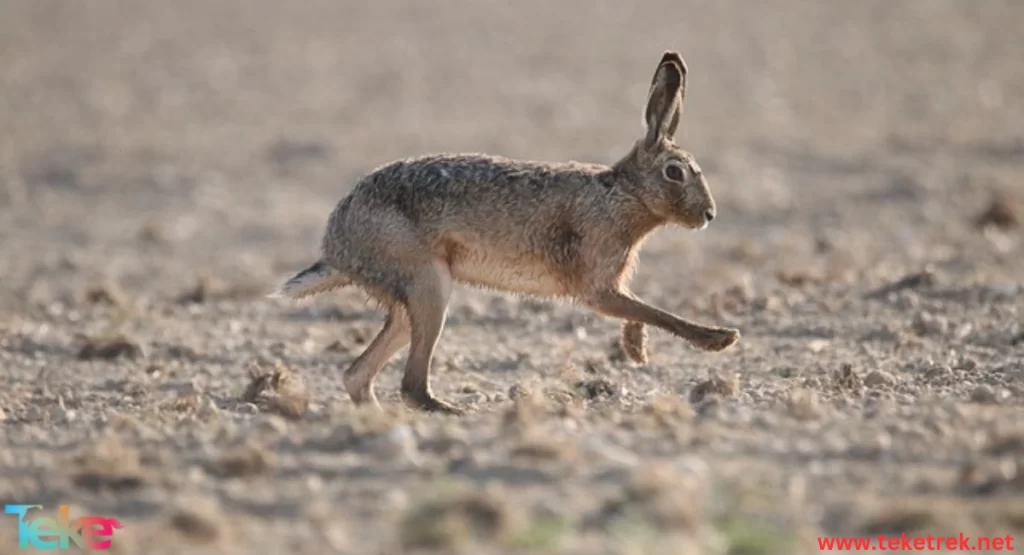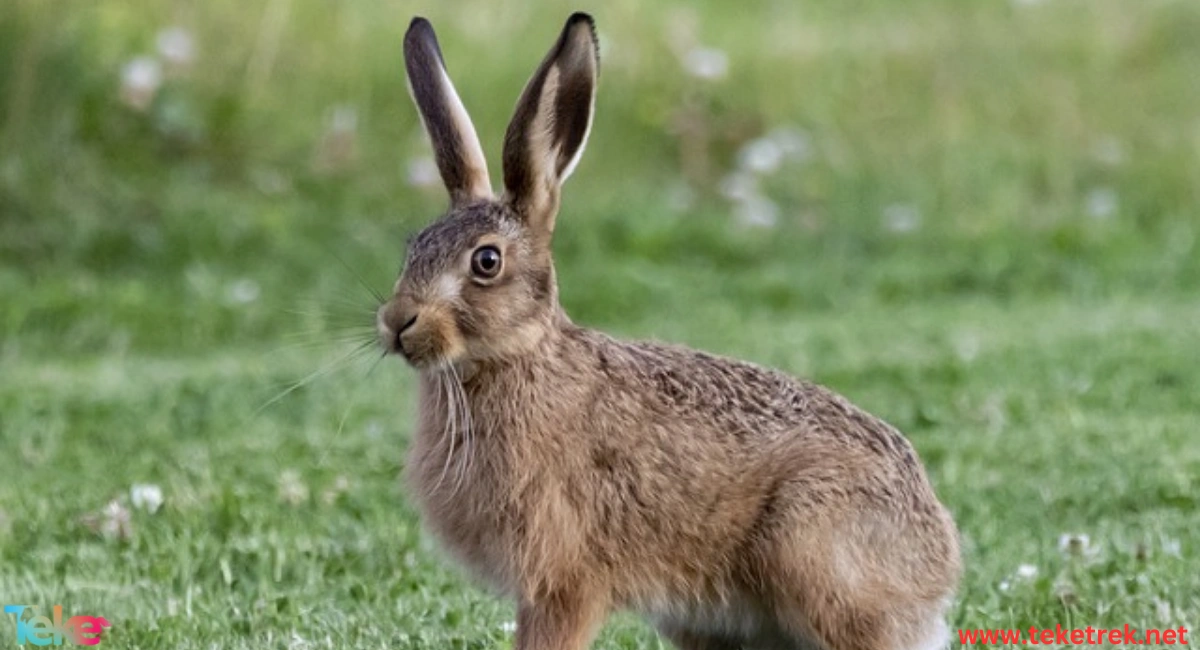The Indian hare is a small mammal found in grasslands and open forests, typically active in the early morning and late afternoon.
The Indian hare can often be seen foraging for food in fields and meadows. In this article from teketrek, we will talk about the Indian hare and mention the most important information about it.
The Indian hare belongs to the phylum Chordata, subphylum Vertebrata, class Mammalia.

Habitats of the Indian Hare:
It Found in southern India, extending from as far east as Godavari to west as far as Khandesh, Berar, and Madhya Pradesh.
Indian hares prefer areas where large expanses of scrub and forests alternate with agricultural land. They are commonly seen in coastal grassland communities. Mountainous regions, especially the lowlands at the base of hills, are preferred habitats for Indian hares.
Physical Characteristics of the Indian Hares:
Indian hares are called black-naped hares due to the patch of black fur that extends along the back of the neck.
The upper part of the tail is also black, and the back and face are brown with black hair scattered throughout, while the lower parts are white.
The total length of Indian hares ranges from 40 to 70 cm, and the weight ranges from 1.35 to 7 kg.
Like all wild hares, Indian hares have long ears and large, well-covered hind feet.
There is some evidence that wild hares introduced to islands are smaller than those found on the Indian mainland.
Breeding Stages of the Indian Hare:
During the mating season, the male Indian hare becomes aggressive, fighting with other males using its front feet and “boxing” with its hind feet.
Male Indian hares will attempt to mate with as many females as possible.
Breeding rates tend to be highest during the rainy season, although these hares generally breed throughout the year.
The increased breeding rate is likely due to the availability of nutrient-rich foods. On average, 69% of adult females carry each year.
Habits and Lifestyle of the Indian Hares:
Indian wild hares are shy and solitary animals.
The Indian hare is a crepuscular animal that spends most of the day sleeping in hollows made in the grass or in a flat-shaped nest.
Sometimes Indian hares can be seen lying on their sides sunbathing.
Wild hares are fast animals and can run at speeds of up to 80 km/h for short distances.
Diet of the Indian Hare:
Indian wild hares are herbivores, primarily feeding on various grasses and also practicing coprophagy.
The types of plants eaten by the Indian hare vary with the seasons.
Many of the areas where Indian hares live have wet and dry seasons, which play a significant role in food availability.
During the rainy season, short grasses abound and are the preferred food for Indian hares.
During the dry season, when short grasses are scarce, more flowering plants are consumed, and they also eat crops and sprouting seeds.
Population Threats Faced by Indian Hares:
The main threats to this species include the loss of its original habitat, mainly due to agricultural expansion.
Indian hares are also hunted by local residents for meat.
According to the IUCN Red List, the Indian hare is locally common throughout its range, but no total population estimate is available.
Currently, Guy is on the IUCN Red List.

Frequently Asked Questions About Indian rabbit:
Why are Indian hares named so?
The reason is that their original habitat is India.
- What are the predators of the Indian hare?
Predators include canids (foxes, wolves, and jackals), herpestids (mongooses), felids (leopards and wild cats), as well as humans, eagles, and hawks.
- Where does the Indian hare live?
The Indian hare lives in the Andes Mountains of South America. Many species of them are owned in Europe after their transfer due to the Spanish invasion¹.
- What does the Indian hare eat?
The Indian hare is herbivorous and feeds on fresh food such as alfalfa, dandelion, celery, cucumber, yellow corn, sweet pepper, cauliflower, cabbage, carrots, lettuce, and fruit¹.
- What are the characteristics of the Indian hare?
– The Indian rabbit has a full and round belly.
– It needs a large digestive system to digest solid plant materials.
– It reproduces 5 times in year.
– The number of her offspring ranges from 2-4 per time.
– The fur of the Indian hare is soft.
– It can be white, gray, brown, black, or mixed.
– It can live up to 14 years in captivity, with an average lifespan of 8 years.
- What is the lifespan of an Indian rabbit?
– Its lifespan ranges from 5-8 years¹.
- What is the common use of the Indian hare?
– It is used in laboratories for experiments, especially in the field of powders and dermatological medicines.
– It is considered one of the best domesticated animals that can be raised in homes.
- What does the Indian rabbit symbolize?
The Indian rabbit symbolize fertility and abundance.
In conclusion
The Indian rabbit is a distinctive wild creature that plays an important role in the ecosystem. This animal has a high ability to adapt to its different environment, making it a vital element in maintaining natural balance. Besides, the Indian hare contributes to the diversity of wildlife and forms part of the heritage of local cultures in many regions.
Preserving the Indian hare and protecting it from environmental threats is a collective responsibility to ensure the continuity of this species and its positive impact on the environment and biological diversity.





